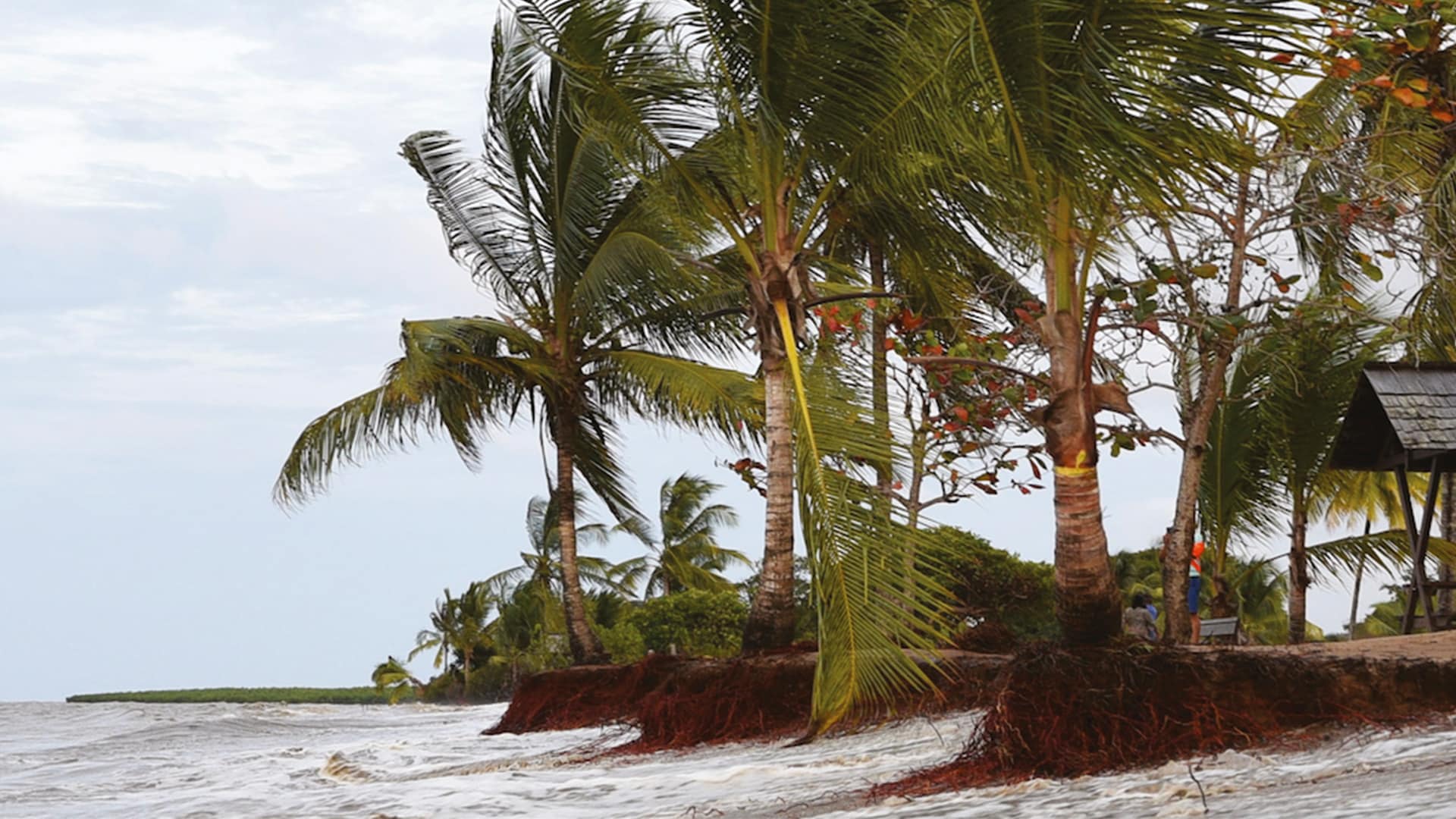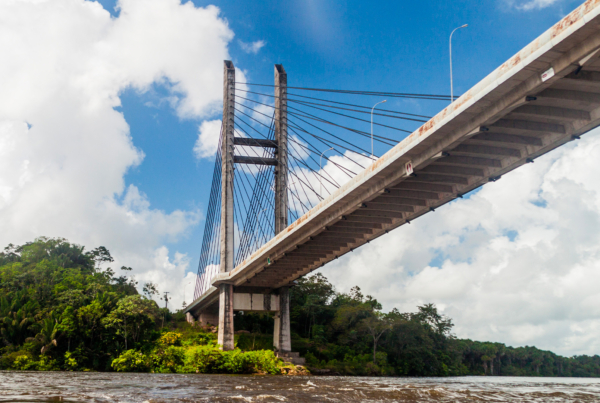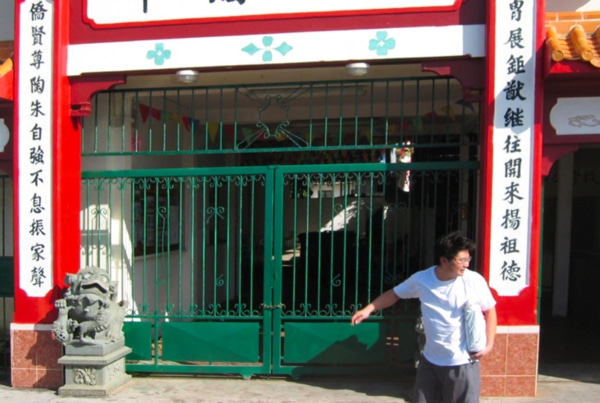
On Thursday 16 October 2025, the University Library of the University of Guyana hosted another session of the “Borders, Circulations, Interculturalities and Human-Milieu Interactions” seminar. This meeting highlighted the collective research project based around the book Habiter le littoral des Guyanes, s'adapter au changement? directed by Marianne Palisse and Gérard Collomb.
Understanding the dynamics of Guyana's coastline
How do you live along the coastline of the Guiana Shield, one of the most mobile in the world? This coastline, bordered by mudflats from the Amazon, is constantly changing its face. Mangroves move, beaches appear or disappear, and episodes of rapid erosion profoundly transform inhabited areas. This seminar provided an opportunity to combine scientific, environmental and social approaches to better understand these changes.
The researchers shared their analyses and questioned people's ability to adapt to these natural transformations.
A collective work on change
The book Living on the Guiana coast, adapting to change? brings together researchers from a wide range of disciplines. Their first ambition is to describe how people have inhabited and continue to inhabit this unique coastline. The second was to understand the vulnerability of societies and their adaptation mechanisms in the face of rapid environmental change. Today, against a backdrop of global climate change, the book offers a cross-section of local and scientific knowledge. It highlights the wealth of human experience and the diversity of responses to the challenges facing coastal Guyana.
A multidisciplinary approach
Each chapter explores a particular aspect of the Guiana coastline:
- Archaeologists present their findings on pre-Columbian occupations.
- Geographers and historians analyse colonial attempts to control the environment, such as land reclamation in Suriname and the construction of dykes in Guyana.
- Anthropologists are studying Amerindian and Creole ways of living, based on mobility and adaptation.
- Finally, the case of Kourou, the “space city”, illustrates the tension between planned and spontaneous development.
This diversity of perspectives provides a better understanding of the relationship between human societies and their coastal environment.
A seminar at the heart of local issues
By bringing together researchers from a wide range of backgrounds, the “Borders, Circulations, Interculturalities and Human-Milieu Interactions” seminar confirms the University of Guyana's position as a major player in regional research.
It helps to promote interdisciplinary work and collective reflection on the environmental challenges facing the Guianas.
This project is a perfect illustration of our desire to think about borders, mobility and the interactions between man and the environment.
This review of the Living on the Guiana coast highlights the the need for dialogue between disciplines to understand and anticipate changes to the coastline. Bringing together science, culture and society, this initiative reinforces the role of research in building a sustainable future for the Guianas.
👉 Next event: to continue these scientific exchanges in order to better understand the relationship between populations and their environment.
Find out more about the book : Palisse, Marianne, and Gérard Collomb. 2025. Living on the Guyana coast, adapting to change? From the Americas. Presses universitaires de Rennes.
FAQ - Frequently Asked Questions
When will the seminar take place?
The seminar will be held on Thursday 16 October 2025, from 6pm to 8pm.
Where will the session take place?
The meeting will take place at the University Library of the University of Guyana, Troubiran campus, Cayenne.
Who is organising the event?
The event is organised as part of the «Borders, Circulation, Interculturality and Human-Milieu Interaction» seminar by :
Agnès Clerc-Renaud (LEEISA), Damien Davy (LEEISA), Rosuel Lima-Pereira (MINEA), Marianne Palisse (LEEISA)
What theme will be covered?
The session will focus on the collective research project based on the book Habiter le littoral des Guyanes, s'adapter au changement? (Presses universitaires de Rennes, 2025), directed by Marianne Palisse and Gérard Collomb. She will be exploring the dynamics of the Guianese coastline, environmental transformations and the adaptation strategies of human societies.
Who will be speaking at the session?
Marianne Palisse (University of Guyana / LEEISA); Antoine Gardel (CNRS / LEEISA)
Why talk about the Guiana coastline?
Because this coastline is one of the most mobile in the world. It is subject to rapid change as a result of silt banks from the Amazon, and poses major challenges for the people who live there. This meeting will provide an opportunity to reflect on environmental and social issues in the context of climate change.
Who is this seminar for?
Anyone interested in coastal dynamics, society-environment interactions, interdisciplinary research and climate issues. Admission is free.
Do I need to register?
No prior registration is required. Access is free and open to all.




